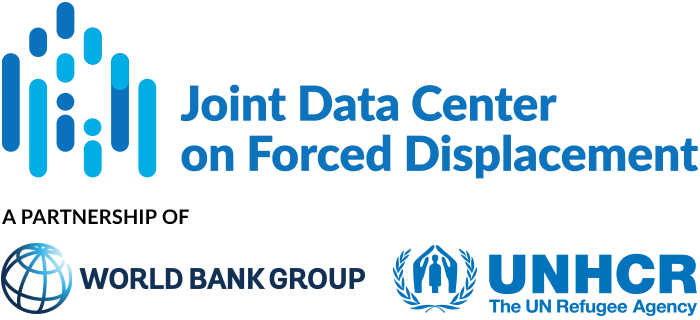Internally Displaced People in Yemen
Inclusion of IDPs into the national Yemen Household Budget Survey (YHBS)
In this section
Overall objectives
The main objective of this activity is to generate updated and inclusive data on the welfare and living conditions of forcibly displaced populations in Yemen, especially internally displaced persons (IDPs), by integrating them into the upcoming Yemen Household Budget Survey (YHBS). This survey will address critical data gaps, as existing statistics on poverty, living conditions, and labor market outcomes are outdated, while recent phone surveys show that IDPs face greater challenges in food security, access to services, and income compared to non-displaced populations.
No national Household Budget Survey has been conducted since 2014, when poverty was nearly 49%. In partnership with Yemen’s Central Statistical Office, the World Bank, UNFPA, and UNHCR plan to conduct the HBS in areas under control of Yemen’s Internationally Recognized Government in 2025/26.
By including both displaced and non-displaced households, the YHBS aims to improve the targeting of humanitarian and development assistance, strengthen social protection programs, and support sustainable interventions for vulnerable groups. The survey will also develop tailored sampling methodologies for IDPs to ensure accurate and comparable data, informing future data collection efforts.
The collected data will enhance the Government of Yemen’s capacity to monitor progress on the Sustainable Development Goals (SDGs), particularly for displacement-affected populations, and guide policy dialogue, program design, and coordination among humanitarian and development actors.
Activity description
The Yemen Household Budget Survey (YHBS), starting in October 2025, will collect data from around 8,000 households in areas controlled by the Internationally Recognized Government. For the first time, the survey will include a dedicated sample of internally displaced persons (IDPs), both living in exclusive settlements and within host communities, using an innovative gridded sampling approach. In the absence of a comprehensive sampling frame, this approach divides the study area into regular spatial grid cells (i.e. 100m, 500m, 1000m) with each cell containing a value associated to the population of interest (i.e. build up area, number of households/persons etc.). From this frame a stratified probability proportional to size (PPS) sample is taken, where the MoS (measure of size) is the corresponding cell value.
The survey will gather detailed information on household consumption, labor market outcomes, and living conditions. This data will support better targeting for social protection and humanitarian programs, while also building national capacity to include IDPs in official statistics. A policy brief will be produced to highlight key comparisons between IDP and non-IDP populations.
Engagement with partners
As chair of the Data and Information Group (DIG), the World Bank will coordinate with donors, UN agencies, and other data partners to align objectives, share draft tools, and gather feedback through regular updates. UNHCR will lead dissemination efforts via relevant Clusters and Working Groups, promoting coordinated, data-driven responses. Meanwhile, ongoing coordination with organizations supporting the CSO will strengthen training and capacity building.
Background and Context
Since 2015, Yemen has faced a severe protection and displacement crisis amid fragile peace talks and regional tensions. Relations between the internationally recognized government in the south and de facto northern authorities remain complex, complicating aid delivery.
Widespread infrastructure damage, weakened institutions, and a sharp economic decline—Yemen’s GDP has halved since 2015—have left millions vulnerable. Essential services like shelter, water, schools, and hospitals are deteriorating, while repeated shocks such as cholera outbreaks and food insecurity worsen conditions.
Fragmented governance has led to parallel institutions and inconsistent data collection, causing conflicting statistics. In 2024, over 18 million people, including 9.8 million children, needed humanitarian aid. Yemen hosts 4.8 million internally displaced persons (IDPs), mostly women and children, many living in overcrowded sites or rental housing.
Displaced and marginalized groups face serious protection risks, discrimination, and limited access to services. Repeated displacement traps families in dependency, while economic hardship drives harmful coping strategies like early marriage and child labor. Phone surveys show IDPs fare worse in food security, service access, and income, but official poverty data remain outdated.
Urgent, improved data is needed to better target humanitarian aid. In 2023, Yemen received about USD 1.5 billion in humanitarian assistance, alongside a USD 4 billion World Bank IDA portfolio. However, targeting displaced households could be more effective with richer, comparable data on IDPs and non-IDPs.
Contact
For further details on this activity, please contact:
Wendy Karamba, JDC Focal Point, [email protected]
More activities
Refugees in Chad
This report analyzed data from the 2018-2019 Refugees and Host Communities Household Survey in Chad (RHCH) to inform the Government, the World Bank, UNHCR and other development and humanitarian organizations.
Refugees & Internally Displaced Persons in Cameroon
Inclusion of refugees and internally displaced persons in the 2023 Cameroon Population and Housing census.
Internally displaced people in the Central African Republic
Developing a new module for internally displaced people in the national Harmonized Household Living Conditions Survey.


